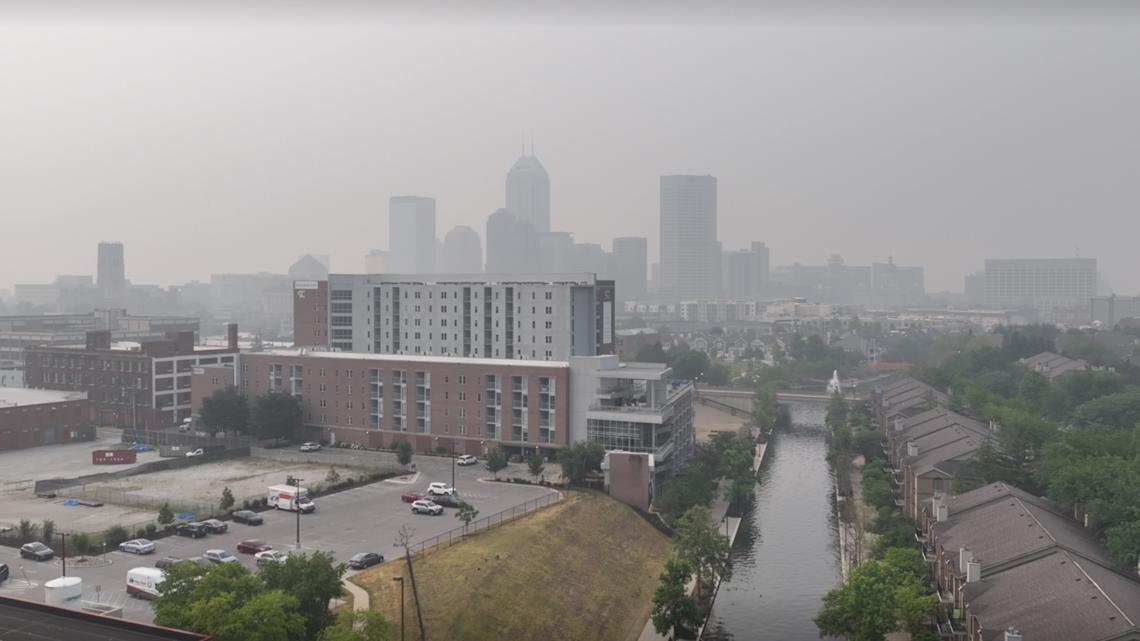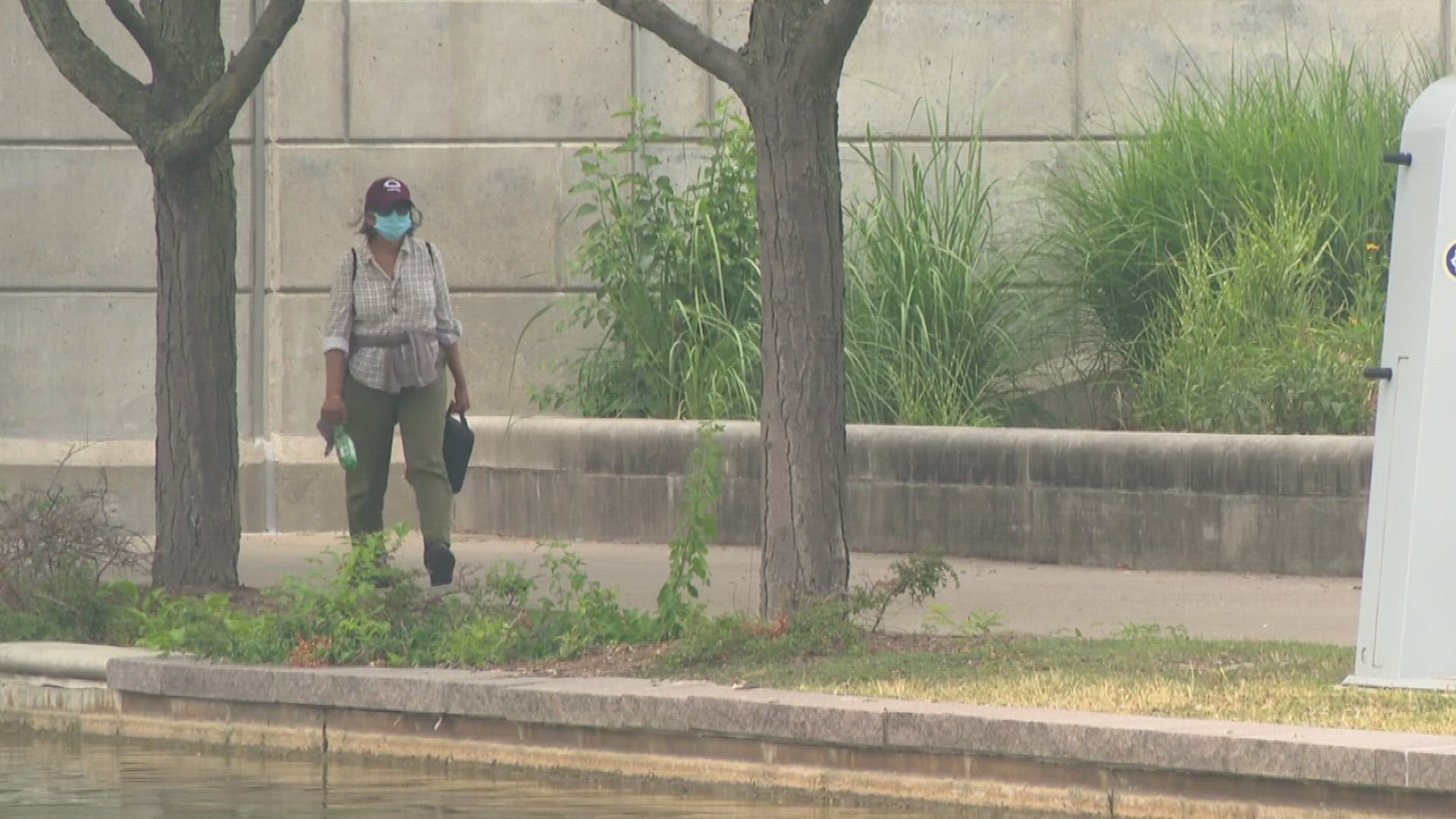INDIANAPOLIS — Wildfire smoke blowing from Canada is causing low visibility in central Indiana and across much of the country. But the haze is the least of the problems, as the unhealthy levels of pollution can cause serious health impacts.
The good news is there are several ways to protect yourself and your family from some of the negative effects of the smoke.
But first, you need to understand the problem and why it is so hazy in Indiana.
Smoke is made of tiny particles of soot, carried in the air. It's their size that makes them a problem. For a sense of scale, your average grain of sand is about 90 microns in diameter.
A human hair is about 70 microns in diameter. A grain of pollen is a lot smaller, just 10 microns in diameter. But the soot particles from this smoke are even tinier, just 2.5 microns in diameter.
That tiny size makes the soot hard to filter out, both for your buildings HVAC system, but also for your body.
According to the Centers for Disease Control and Prevention, within the first 24 hours of exposure to smoke, you can start to feel immediate effects. Those include stinging eyes, runny nose, headaches and a scratchy throat. You can also feel short of breath, have a cough, or a rapid heartbeat.
The CDC provides information on how to stay safe and healthy before, during and after a wildfire, including avoiding health impacts from wildfire smoke and cleaning up safely.
Long term, the Enivornmental Protection Agency says breathing in this kind of fine particulate pollution can make it harder for body to fight germs like bacteria and viruses that you breathe in. It can also complicate any existing respiratory or cardiovascular conditions you may have.
So how do you protect yourself? It's all about keeping those particles away from your body.


Staying safe from the smoke
That starts with staying indoors as much as possible. If you do need to go outside, you should try and keep your trips short. You also want to avoid breathing hard while you're out in the smoke. If you need to be outside, a mask can help.
The EPA says to pick a mask that has been tested and approved by the National Institute of Occupational Safety and Health. The mask will be marked with the words "NIOSH" and either "N95" or "P100." NOTE: None of these masks are made to fit children. The best way to protect them is to keep them indoors.
If you are indoors, there are some steps to take, too. The easiest is to keep doors and windows closed to keep the smoke out. You can also use your HVAC system to help protect you, too. Take a look at your filter. You want one rated MERV13 or higher to keep the tiny soot particles out of your house. Even if you don't upgrade your filter, the EPA says running the fan on your system continuously can reduce particle concentrations by as much as 24%. So if you can stomach the hit to your power bill, switch your thermostat from "auto" to "on."
You can also buy a portable air filter. You'll want to make sure it doesn't produce ozone. But studies show the filter could cut down on particles by as much as 45%.
Is this something that will happen again?
Unfortunately, scientists believe climate change could make this a more common problem. The fires are up in Canada, where it is hotter and dryer than usual. As the planet continues to warm up, we could see more of this in future years.
"You can see it ramping up over the last couple decades, which is consistent with temperatures going up in a lot of these places, and drought-like conditions tend to increase in these kinds of environments," said Gabe Filippelli, with the Indiana University Environmental Resilience Institute. "It's exactly like what a climate change future might look like more often than not."

